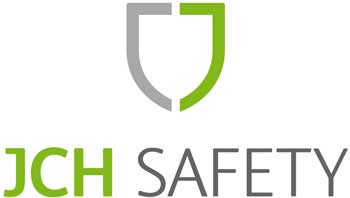Fire extinguishers are a vital part of fire safety. They could save your life in the event of a fire. This is The Coventry Fire Safety Guide to fire extinguishers to provide you with an introduction to fire extinguishers.
What are the fire extinguisher classifications?
Fire extinguishers are classified based on the type of fire they can put out. There are five classes of fire: A, B, C, D and K.
Class A extinguishers are used for fires involving ordinary combustibles such as wood, paper or cloth.
Class B extinguishers are used for fires involving flammable liquids such as gasoline or oil.
Class C extinguishers are used for fires involving electrical equipment.
Class D extinguishers are used for fires involving flammable metals such as magnesium or titanium.
Class K extinguishers are used for fires involving cooking oils and fats.

How to operate a fire extinguisher?
Knowing how to use a fire extinguisher is a key life skill. Although we never advocate tackling fires, on occasions you may have no choice or need to use one in order to escape from a fire. Knowing what extinguisher to use and how is vital. We advise having some formal training and we would like to direct you to our online Fire Extinguisher training course to do this.
In the meantime, these are the key basics:
Pull the pin between the handles.
Aim the hose or nozzle at the base of the fire, leaving a distance of 6-10 feet between you and the fire.
Squeeze the fire extinguisher’s handle.
Sweep the extinguishing hose or nozzle from side to side to cover the base of the fire.
This is known as the PASS method which stands for:
P ull the pin.
A im low.
S queeze the handle slowly and evenly.
S weep the nozzle from side-to-side.
Tackling different fires involves different techniques, so we would strongly direct you to our low cost online course.
Always remember, the use of fire extinguishers can make matters worse, for example by spreading flaming objects or causing something else to ignite. Always keep your back to the fire exit and make sure your exit is clear. Do not take risks. Do not let yourself be overcome by smoke and fumes. It is always best to get out as soon as possible and to raise the alarm. Close the door to the room where the fire is if possible as you leave.
How to raise the alarm?
When a fire is identified it is vital to get out as soon as possible and to raise the alarm. This is how to do it:
If your building has an automatic fire alarm system fitted, an automatic fire detector should set the fire alarm off if a fire is detected. If you identify a fire before the fire alarm has, it is your duty to set the fire alarm off as you leave the building. Obviously, this involves knowing a bit about the fire alarm that is fitted in your building. Your employer should provide you with regular fire safety training and should tell you about how the fire alarm works and how to set it off manually in an emergency. If you haven’t had basic fire awareness training we advise you to take our course. This should be supported by information from your employer about fire safety.
If you identify a fire before the fire alarm you should:
- Make you way towards your nearest exit. Follow the emergency exit directional signage which will lead you to a place of safety, away from the fire, ideally outside of the building. As you leave the room, close the door behind you (if safe to do so), shout ‘fire’ as you go to alert other building users.
- Press the fire alarm button, often known as the manual call point, when you pass one. This is the most common way to raise a fire alarm. The fire alarm button is usually located near the exit doors or in the corridors of buildings. A light press of the thumb or finger will raise the alarm.
- Use your voice – Another way of raising the alarm is by using your voice to alert people. This could be the first thing that you do quite instinctively. It may not be the most effective method, but with a loud voice it will work to alert those occupants in the near vicinity.
- Use other alarms – In theory, you can use anything audible to raise the alarm, as long as everyone knows in advance what the sound means. But there are a number of alarms available which are instantly recognisable as a fire alarm. Make sure to discuss your buildings fire strategy with your employer and ask to see the fire risk assessment that must be in place by law.
How can JCH Safety Help?
We are specialist fire safety advisors. We provide assistance to clients to protect people from the consequences of fire. JCH Safety carry out fire risk assessments, provide safety training and inspect buildings. We have a vast library of fire safety training courses. If you would like any assistance, please do not hesitate to get in touch.

